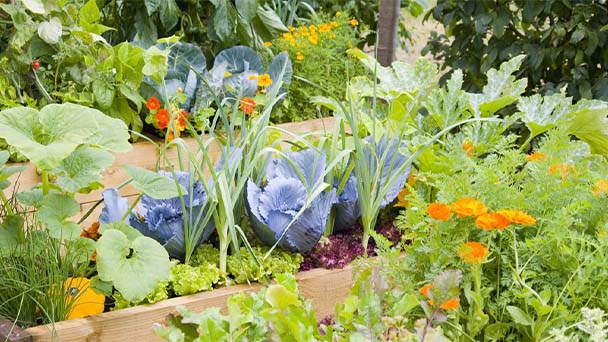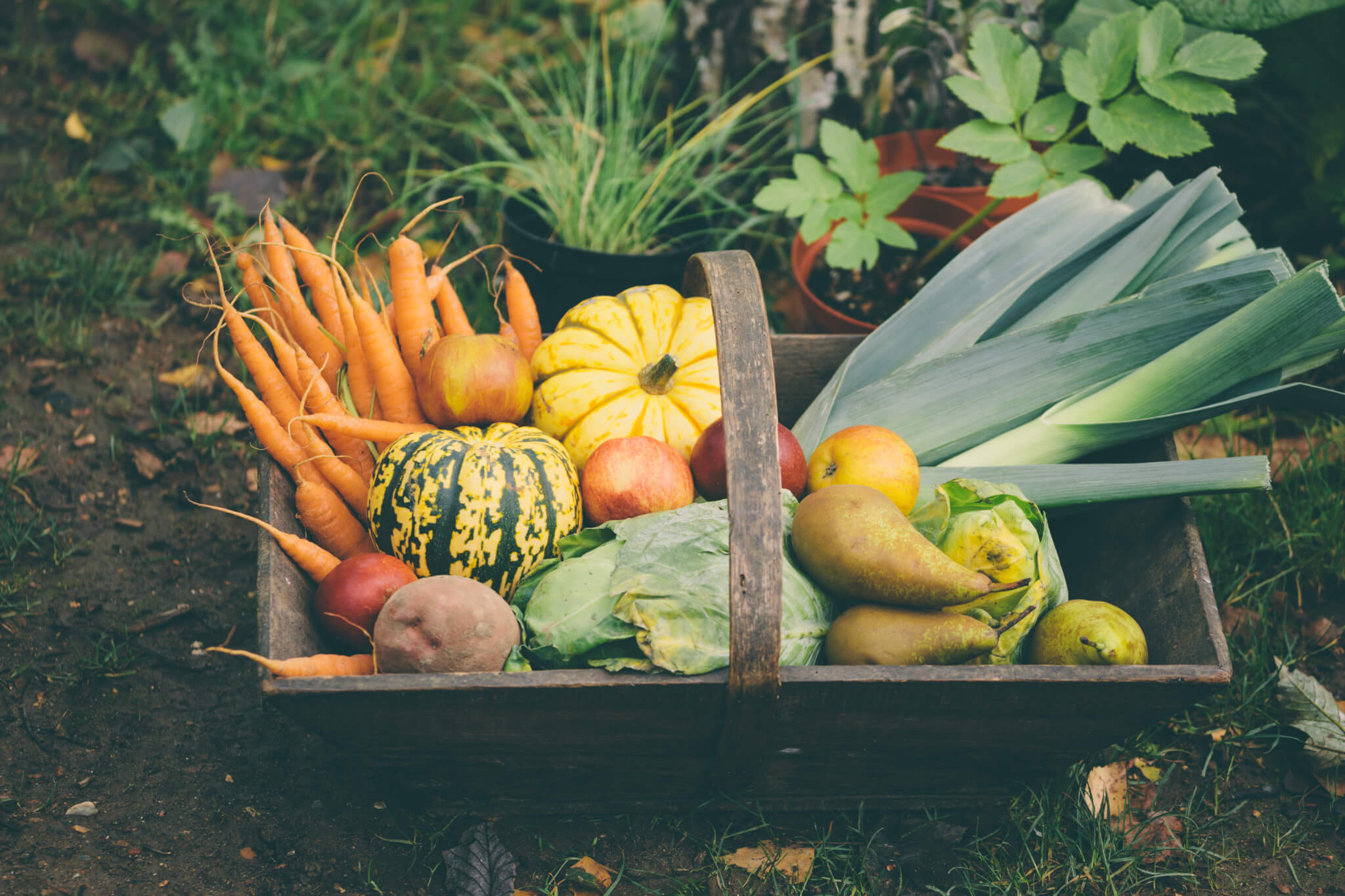How to plant a fall garden
Written by Joy
Sep 29 2020

Spring gardening usually gets all the glory and admiration, but how to grow fall garden is also a big problem. Why? The overgrown garden is not a beautiful sight because of withering. There was no burning down of lawns, overgrown shrubs, hanging branches, etc. So what should we pay attention to in autumn gardening?

Depending on where you live, you may need to bring outdoor fountains indoors to prevent cracking and freezing. If it is a great undertaking, you'd better drain your garden fountain completely, dry it with a non-abrasive cloth, and place a fountain cover on it as a protection against the weather.
Finally, you should feed your garden with store-bought or organic garden fertilizers because it will save you time and money next year. Even if the temperature drops, the ground remains warm so that plants can experience root growth. You should remember that healthy roots will lead to abundant plants and flowers in the spring when planting a fall garden.
As mentioned earlier, it is better to mow grass rather than rake them, as this is a good way to feed worms. They will nourish your lawn by penetrating the leaves into the lawn and roots. If your leaves become too large to mow, blow them with a rake or load them into a compost or leaf pile.
In order to prevent the rain barrel from stinking and stagnant, you can thoroughly clean the barrel with old water before the rain is refilled. While you are in it, check your drains to make sure they are not blocked by leaves, branches, and other debris. Otherwise, they will not flow smoothly when it starts to rain. You ought to check out our blog post, the best gutter cleaning tips, so you can keep your gutter in the autumn and winter season.
Due to the temperature in your area, you may find that it is too late to grow broccoli, cabbage, Brussels sprouts, beets, carrots and other plants that require a lot of maturity. However, you can grow another lettuce, radish, kale and mustard greens. And, you'd better not forget to push your garlic into your soil a few inches of rows.
You'd better not forget to collect some seeds from your tomatoes, peppers, beans and other'open-pollinated' plants. You can grow them next year, share the fruit with your family and friends, or in this case, you can share your labor.
Finally, considering testing your soil to see if it is acidic or alkaline is necessary, or if it needs nutrients. Then you may overdo it and need to cut.

Bring potted plants indoors.
why? Because ants and other small animals like warm and moist soil. You'd better rinse the soil with water several times to prevent it from entering your garden shed. You should remove dead or faded leaves, spray the bottom with water to remove unwanted pests, and apply a new mulch on the surface of the plant soil to prevent mosquitoes from gathering in the outdoor shed.Outdoor shed
If your tools and supplies are spread all over the place, you may want to organize them. You can use different garages to organize projects, such as stacked recycling bins, heavy storage racks, extension cord winders, etc. After opening, insecticides and fungicides lose their strength.Remove finished vegetables
Cleaning up debris and weeds in the garden is necessary when planting a fall garden. You can also rake blades of grass onto the lawn and mow the lawn with a lawnmower so you can cover your garden with chopped leaves. The mixture will improve spring fertility and prevent unwanted weeds. You may even want to plant shrubs and plants, or pull out shrubs and plants that you no longer like.Depending on where you live, you may need to bring outdoor fountains indoors to prevent cracking and freezing. If it is a great undertaking, you'd better drain your garden fountain completely, dry it with a non-abrasive cloth, and place a fountain cover on it as a protection against the weather.
Finally, you should feed your garden with store-bought or organic garden fertilizers because it will save you time and money next year. Even if the temperature drops, the ground remains warm so that plants can experience root growth. You should remember that healthy roots will lead to abundant plants and flowers in the spring when planting a fall garden.
Maintain the lawn
Before fall dormancy, you should take care and thicken your lawn to avoid weeds next spring. It's vital about how to plant a fall garden. You can do this with high potassium winter grade fertilizer. If you live in a warm area of the country, you can use preventive herbicides to kill weed seeds that thrive in cold weather. Next, if you plant your lawn with ryegrass and other cool-season grasses, do it early in the fall, the seed will germinate, it will grow roots and establish before the weather gets colder.As mentioned earlier, it is better to mow grass rather than rake them, as this is a good way to feed worms. They will nourish your lawn by penetrating the leaves into the lawn and roots. If your leaves become too large to mow, blow them with a rake or load them into a compost or leaf pile.
Take care of compost and rain barrels
If you compost, you'd better be careful to accept grass clippings from your neighbors because they may use weed killers and fungicides, which can cause severe damage to your home compost pile or compost bin. To prevent tree roots from growing in the compost pile, you can place plastic sheets or old shower curtains under it. You can put old compost on top of new material because it contains beneficial bacteria and it will quickly start the composting process.In order to prevent the rain barrel from stinking and stagnant, you can thoroughly clean the barrel with old water before the rain is refilled. While you are in it, check your drains to make sure they are not blocked by leaves, branches, and other debris. Otherwise, they will not flow smoothly when it starts to rain. You ought to check out our blog post, the best gutter cleaning tips, so you can keep your gutter in the autumn and winter season.
Take care of vegetables and herbs
If you don't talk about vegetables and herbs, autumn gardening skills will not be complete when planting a fall garden! Cleaning up your vegetable garden by pulling the remaining plants and composting them is vital. In addition, you'd better pull, hoe or dig weeds into your soil. If you grow rhubarb, you can chop it with asparagus fern, which can be compost. To prevent weeds in winter, you are able to add a new layer of leaf mulch.Due to the temperature in your area, you may find that it is too late to grow broccoli, cabbage, Brussels sprouts, beets, carrots and other plants that require a lot of maturity. However, you can grow another lettuce, radish, kale and mustard greens. And, you'd better not forget to push your garlic into your soil a few inches of rows.
You'd better not forget to collect some seeds from your tomatoes, peppers, beans and other'open-pollinated' plants. You can grow them next year, share the fruit with your family and friends, or in this case, you can share your labor.
Cleaning tools and equipment
Of all the gardening techniques, this one is the most cumbersome. However, you need to clean your gardening tools to make them look great and in working order before putting them in winter. You should wash, rinse and wipe away dirt, coat metal parts to prevent rust, and wipe the wooden handles with linseed oil to prevent them from cracking and drying. You better check your garden tools to see if they need to be replaced.Finally, considering testing your soil to see if it is acidic or alkaline is necessary, or if it needs nutrients. Then you may overdo it and need to cut.
Latest Updated
- Benefits of Bugleweed - 7 Science-backed Health Benefits
- Bugleweed Dangers & Side Effects - Is It Poisonous?
- How to Plant Evergreen Trees - What You Should Know
- When to Plant Evergreens - Grow Guide for Evergreen Trees
- 12 Wonderful Evergreen Shrubs for Your Garden
- 12 Popular Evergreen Plants with Pictures for Beginners
- When And How To Prune A Lilac Bush Like a Pro
- How to Grow & Care for Lilac Vine (Hardenbergia Violacea)
- Japanese Lilac Tree (Syringa Reticulata) Care & Propagation Guide
- Shumard Oak Pros and Cons - What to Know
Popular Articles
- Winter maintenance of Antirrhinum Majus
- How to Grow Terminalia Mantaly Tree
- How to Grow and Care for Crossostephium Chinense
- How to grow Antirrhinum Majus in spring
- Peristeria Elata (Dove Orchid) Profile: Info & Care Guide
- Underwatered Snake Plant (Sansevieria Trifasciata) - Signs And How To Fix
- How to Care for Brazilian Jasmine Plant (Mandevilla Sanderi)
- How to Grow & Care for Graptopetalum Purple Delight in Summer
- Rosa Chinensis (China Rose): Plant Growing & Care Tips
- How to Care for Baby Sun Rose (Aptenia Cordifolia)